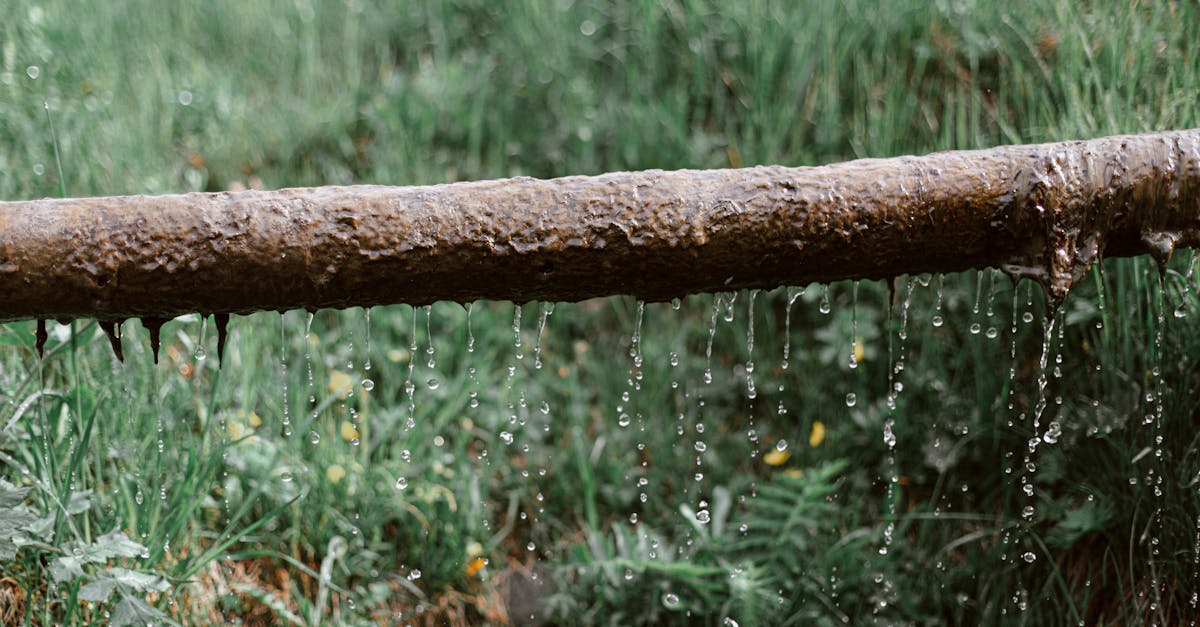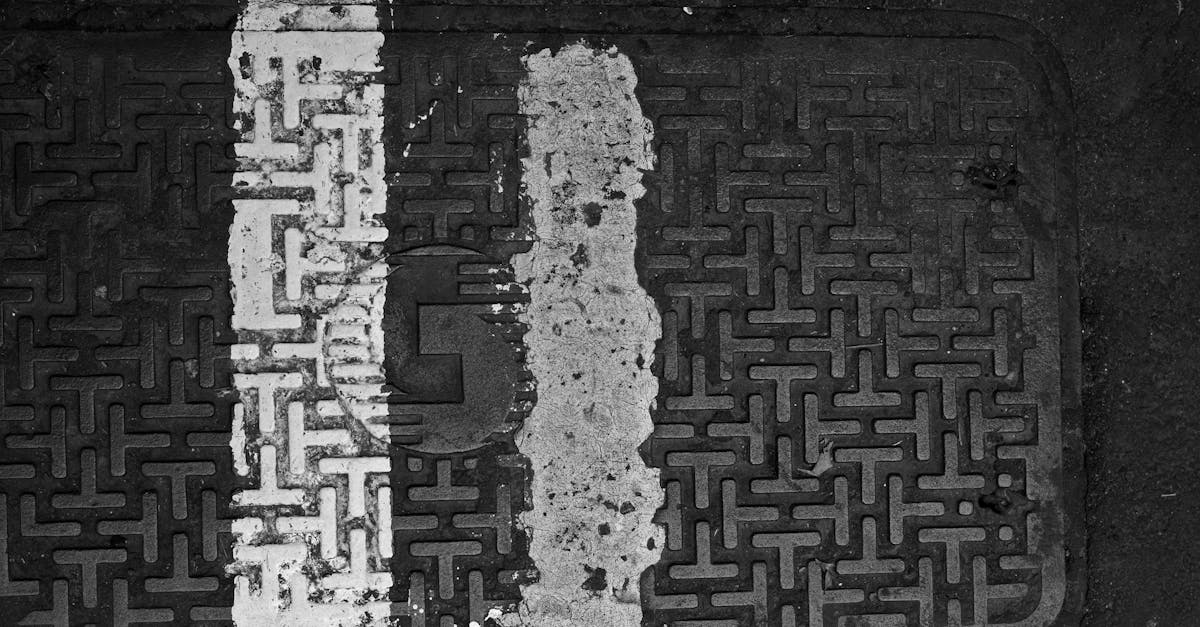
Table Of Contents
Maintenance Strategies for Drainage Systems
Maintenance plays a crucial role in ensuring the effectiveness and longevity of drainage systems. Proper maintenance procedures not only prevent clogging and backups but also extend the lifespan of the infrastructure, thereby reducing the need for costly repairs. In Welland, a proactive approach to maintenance is essential to uphold the functionality of the drainage systems and prevent potential flooding issues. Regular inspections and clearing of debris are fundamental tasks that should be conducted routinely to identify and address any obstructions in the system.
Adhering to a strict maintenance schedule for Drainage Solutions in Welland is imperative to uphold the efficiency of the systems. Clearing debris such as leaves, branches, and sediment from catch basins and storm drains can help prevent blockages and ensure smooth water flow. Additionally, conducting frequent inspections allows for the timely detection and repair of any damages or potential issues within the drainage network. By prioritizing maintenance strategies, municipalities can effectively manage drainage systems and mitigate the risk of flooding or structural damage in the long run.
Regular Inspection and Clearing Debris
Regular inspection and clearing debris are vital components of proper drainage maintenance. Ensuring that drainage systems are free of blockages and obstructions is essential for effective water flow and prevention of flooding. In Drainage Solutions in Welland, a proactive approach to regular inspections can help identify potential issues early on and prevent costly damages.
Regular inspections should be conducted on a scheduled basis to detect any accumulation of debris that might impede the flow of water. Clearing debris such as leaves, branches, and other waste materials from drainage systems can help maintain their functionality and prevent water stagnation. In Drainage Solutions in Welland, prioritizing regular maintenance and debris clearing not only enhances the longevity of the drainage system but also contributes to the overall efficiency of stormwater management in the area.
Legal Regulations for Drainage Projects
When planning and implementing drainage projects, it is crucial to adhere to legal regulations to ensure the proper functioning of systems and mitigate any potential environmental impacts and property damage. In Drainage Solutions in Welland, Ontario, developers and contractors must comply with municipal bylaws and regulations set forth by the local government. This includes obtaining necessary permits and approvals before commencing any drainage work to ensure that the project aligns with the city's land use and environmental policies. Failure to adhere to these regulations can result in fines, delays, and even project cancellations, highlighting the importance of thorough compliance with legal requirements.
Additionally, legal regulations for drainage projects often include considerations for water management practices, erosion control measures, and protection of natural habitats. In Drainage Solutions in Welland, developers must work closely with environmental agencies to assess the potential impact of drainage projects on local ecosystems and water bodies. By incorporating environmentally sustainable practices into their drainage plans and designs, developers can help preserve the natural landscape and prevent pollution of water sources. Overall, understanding and adhering to legal regulations are essential steps in ensuring the success and sustainability of drainage projects in Welland and beyond.
Compliance with Municipal Bylaws
Compliance with municipal bylaws is crucial in the implementation of effective drainage plans in Welland. The regulations set by the local government are in place to ensure that drainage projects adhere to safety standards and environmental regulations. Any deviation from these bylaws can lead to penalties and even the halting of the project, causing delays and increased costs. Therefore, it is imperative for all stakeholders involved in drainage solutions in Welland to be well-versed in the specific municipal bylaws that govern such projects to guarantee smooth implementation.
In addition to understanding and complying with local regulations, obtaining the necessary permits for drainage projects in Welland is essential. Municipalities often require permits that outline the scope of work, the intended impact on the surrounding environment, and other relevant details. Securing these permits in a timely manner is vital to avoiding legal issues and ensuring that the drainage project progresses as planned. Moreover, staying in constant communication with municipal authorities throughout the project can help address any potential concerns or changes to the bylaws that may arise during the implementation of drainage solutions in Welland.
Budgeting and Cost Estimation in Drainage Planning
Effective drainage planning is essential for the successful management of water flow in urban areas. When developing a budget for drainage projects, consideration must be given to various factors such as the size of the area, type of soil, and existing drainage systems. In Welland, for example, a thorough cost estimation process for Drainage Solutions in Welland includes analyzing the scope of work required, materials needed, and labour costs.
It is crucial to allocate resources wisely to ensure the longevity and efficiency of the drainage system. By accurately estimating costs and budgeting effectively, municipalities like Welland can prevent potential issues such as flooding and erosion in the long term. Collaborating with engineers and experts in drainage planning can help in developing cost-effective solutions that meet both the infrastructure needs and financial constraints of Drainage Solutions in Welland.
Allocating Resources Wisely
Allocating resources wisely is a critical aspect of effectively implementing drainage solutions in Welland. It is essential to prioritize the allocation of funds, manpower, and equipment to ensure that drainage projects are completed efficiently and within budget. By carefully planning and budgeting for each aspect of the drainage plan, municipalities can avoid overspending and allocate resources where they are most needed to address potential drainage issues.
Moreover, establishing clear communication channels among project managers, contractors, and stakeholders is vital for successful resource allocation in drainage projects in Welland. Ensuring that everyone involved in the project is aware of their roles and responsibilities can prevent delays, minimize misunderstandings, and ultimately lead to the effective allocation of resources. Effective communication also allows for quick adjustments to be made if resources need to be reallocated to address unexpected challenges that may arise during the implementation of drainage solutions in Welland.
FAQS
What are some key maintenance strategies for drainage systems?
Regular inspection and clearing debris are essential maintenance strategies for keeping drainage systems effective and functional.
How important is it to comply with legal regulations for drainage projects?
Compliance with municipal bylaws and legal regulations is crucial for the success of drainage projects and to avoid potential legal issues in the future.
How can budgeting and cost estimation play a role in effective drainage planning?
Budgeting and cost estimation are vital aspects of drainage planning to ensure resources are allocated wisely and the project stays within budget constraints.
Why is it necessary to regularly inspect drainage systems and clear debris?
Regular inspection helps identify potential issues early on and clearing debris prevents blockages that can lead to drainage system failures.
What should be considered when allocating resources for drainage projects?
When allocating resources for drainage projects, it is important to prioritize needs, consider budget constraints, and allocate resources wisely to maximize efficiency and effectiveness.






